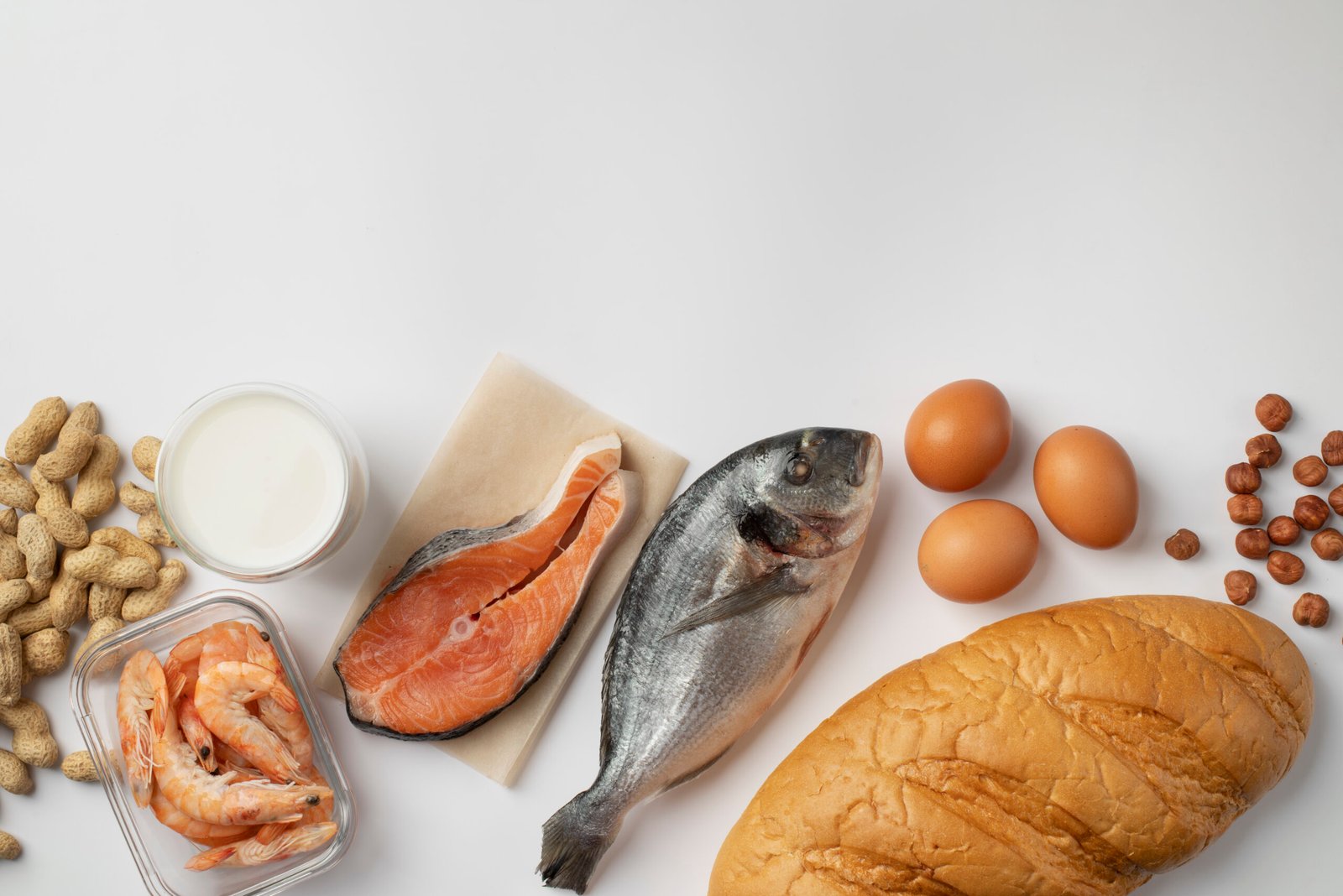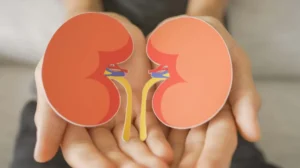Along with carbohydrates and proteins, fats are macronutrients. They not only provide us with energy, but also important fatty acids that the body needs for various functions. But not all fats are created equal. Some fats are considered healthy, while others are said to make us fat and unhealthy. Read this article to learn which fatty acids are truly healthy and which foods provide you with the right fats.
Healthy fats: At a glance
- Your body needs fat, but quality is crucial. The basis of your fat intake should be unsaturated fatty acids from plant sources and oily fish.
- When it comes to unsaturated fats, pay particular attention to omega-3 fatty acids (e.g., from fatty fish, linseed oil, walnuts) to counteract inflammation in the body and create a healthy balance with omega-6 fatty acids.
- Saturated fats aren’t inherently bad. The blanket condemnation is outdated. Saturated fats from high-quality foods like coconut oil, eggs, grass-fed butter, or, in moderation, cheese can be part of a balanced diet.
- The truly unhealthy fats are trans fats, which are found in fried foods, baked goods, and many industrially processed foods. Reduce these as much as possible.
- The right oil for the right purpose: Use virgin olive oil for salads and gently cooking vegetables, heat-stable oils such as high-oleic frying oil or coconut oil for searing, and special oils such as linseed oil exclusively for cold cooking.
Why does our body need fats?
Fat is primarily a source of energy for the body. Fatty acids from food are converted into energy for cells. Your body can also store energy as fat, which evolution intended as a buffer for lean times. Fats also help absorb the fat-soluble vitamins A, D, E, and K, and are building blocks of cell membranes and hormones. In the body, fat also serves as a cushion for organs and keeps us warm.
But which fat is healthiest? The short answer is: It’s all about the right mix of fatty acids! The human body is designed for a balanced diet. It needs fats, just like the other macronutrients, carbohydrates, and protein. The body can also use different fatty acids in different ways, so you should also provide it with different types of fat.

The good ones: How healthy are unsaturated fatty acids?
Unsaturated fatty acids are considered healthy fats and are found primarily in plant-based foods. These include monounsaturated fats, such as those found in nuts and avocados, and polyunsaturated fatty acids. All of these fatty acids are good for the body in the right amounts. They have a positive effect on cholesterol levels, can inhibit inflammation, and are important for brain function.
But here, too, the composition of the fats matters. Pay particular attention to your intake of omega-3 fatty acids. Because today in the Western world we eat large amounts of omega-6 fatty acids– for example, from vegetable oils, meat, and eggs – and too little omega-3. It is the ratio of these two fatty acids that influences many processes in the body. It should be as balanced as possible to reduce inflammation in the body and protect the heart and blood vessels. If the ratio tilts too far toward omega-6, it can increase inflammation and cardiovascular problems.
List of recommended foods with unsaturated omega-3 fatty acids:
- Fish: Fatty sea fish (salmon, herring, mackerel),
- Nuts and seeds: walnuts, flax seeds, chia seeds
- Oils: rapeseed oil, olive oil, linseed oil, walnut oil
- Omega-3 supplements from fish oil or algae oil
Recipe idea: Want to try omega-3-rich alternatives but don’t know what to do with ingredients like walnut oil? Here’s our recipe for a Brussels sprouts, broccoli, and quinoa bowl —rich in omega-3, fiber, vitamins, and minerals. Of course, you can also adjust the vegetables in the recipe according to your taste and the season.
The controversial ones: How healthy are saturated fatty acids?
Foods with saturated fats have long had the reputation of being inherently unhealthy. They are often very high in calories and, in large quantities, can raise LDL cholesterol levels, which is a risk factor for cardiovascular disease. This applies, for example, to red meat, sausage, butter, cheese, coconut oil, and convenience foods containing palm oil.
However, analyses of studies from recent years show that the link between saturated fat and cardiovascular disease is not as clear-cut as long thought. In recent studies, higher consumption of saturated fat did not, on average, lead to a shorter life expectancy in subjects. Some scientists suspect that saturated fat only increases certain types of LDL cholesterol, which do not hurt health.
Many experts now say that it depends on the context, for example, what you replace saturated fats with. If you eat highly processed foods and refined carbohydrates instead of meat, butter, and cheese, this will likely have a negative impact on your health. But if you reduce saturated fats and eat more protein, and unsaturated fatty acids from olive oil, rapeseed oil, nuts, seeds, and fatty fish may have a protective effect on the heart and blood vessels.
In other words, saturated fats don’t necessarily make you sick. But replacing them with more unsaturated fats can help prevent disease.
Did you know? The Mediterranean diet is considered one of the healthiest diets and the reason why many people in the Mediterranean region stay fit into old age. Healthy fats are an integral part of this Mediterranean diet. Instead of butter, olive oil is traditionally used for cooking, and there are plenty of fish and nuts, as well as high-quality dairy products in moderation.
Foods with healthy saturated fatty acids
The quality of the food also matters. Here are some examples of foods containing saturated fat that are recommended in moderation:
- Eggs: They contain both unsaturated and saturated fatty acids, as well as important amino acids, vitamins, and minerals. Eggs contain a lot of cholesterol, but today it is assumed that cholesterol-rich foods do not have a significant impact on cholesterol levels.
- Coconut oil: It contains MCTs, medium-chain fatty acids that are converted into energy more quickly and are less likely to be stored as body fat.
- High-quality dairy products: Pasture-fed butter and cheese made with pasture-fed milk generally have more vitamins and a good fatty acid profile, including conjugated linoleic acid (CLA), which is suspected of having a slightly positive effect on weight loss and heart health. Quality is important, and the cows have been able to graze on pasture. Look for organic, hay-fed milk, grass-fed milk, and similar labels.
Why you should avoid trans fats
Trans fats are unsaturated fatty acids with a special molecular structure. They are typically formed when vegetable oils are industrially hydrogenated or heated to high temperatures, for example, through deep-frying or sautéing. Trans fats occur naturally in smaller amounts in the meat and milk of ruminants such as cows, sheep, and goats.
Trans fatty acids are generally considered unhealthy today. The German Nutrition Society recommends consuming as few trans fats as possible. They have a measurable effect on blood lipid levels, especially cholesterol. Trans fats increase “bad” LDL cholesterol and lower “good” HDL cholesterol. Thus, they contribute to a higher risk of obesity, arteriosclerosis, and cardiovascular disease.
List of foods rich in trans fats:
- Fried potato products such as French fries and potato chips
- Sweets like chocolate bars
- Baked goods such as cakes, Berliners, donuts, croissants, and other puff pastry products
- Ready-made products such as frozen pizza
Trans fats are generally found in many processed foods. If ingredients are labeled “hydrogenated” or “partially hydrogenated” on the packaging, this is an indication of trans fats.
Pizza = fast food = trans fat? Many lists of foods high in trans fats also include the term “fast food,” or simply refer to pizza and burgers. This can be confusing. Frozen pizza and ready-made burgers from the freezer aisle contain a lot of trans fat because they contain industrially hydrogenated fats. If you—or a chef in a restaurant—prepare foods like pizza and burgers with fresh ingredients, they will contain only small amounts of trans fat, for example, from meat or cheese. At best, an Italian pizza Margherita consists of nothing but flour, water, yeast, salt, olive oil, tomato sauce, and cheese.
Foods contain fewer trans fats than before
It has long been clear that trans fatty acids are unhealthy. Therefore, in recent years, new guidelines, legal requirements, and voluntary commitments by the food industry have been introduced to reduce their use. This has had an impact. Margarine, for example, is produced differently today than it used to be. In the 1990s, margarine contained around 20 percent trans fat; today, it is generally less than two percent. Other industrially produced foods also contain significantly fewer trans fatty acids than before.
Healthy oils and fats for cooking
The amount of fat in food also depends on how you prepare it. The fat you use for frying and cooking becomes part of the meal and can also influence the texture of the food. As a general rule, use only as much fat as necessary for frying and baking. Oils, butter, and other cooking fats are very high in calories.
It also depends on what exactly you want to cook. If you want to sear very quickly, which is often useful with meat, for example, you also need an oil that remains stable at high temperatures. If possible, such as with vegetables, fish, or poultry, it’s better to cook gently. This preserves more nutrients and allows you to use healthy oils like virgin olive oil.
Important: Pay attention to the smoke point! If you follow these tips, be careful not to overheat cold-pressed and virgin oils. Once they start to smoke, they become unhealthy.
Gently fry, steam, and cook (up to approx. 180°C):
- Extra virgin olive oil is excellent for frying if it is not heated too hot.
- Cold-pressed rapeseed oil is more expensive than sunflower oil, but it’s worth it. Rapeseed oil has a better fatty acid profile and even contains a little omega-3, while sunflower oil has an extremely high omega-6 content.
- Grass-fed butter provides a flavor many love, as well as fat-soluble vitamins and conjugated linoleic acid (CLA). For example, you can use butter to occasionally roast vegetables at low to medium heat.
Sear and deep-fry (over 180°C):
- Virgin coconut oil is often used in Asian cuisine and, thanks to its saturated MCT fatty acids, is heat-stable and easily digestible. However, since coconut oil consists almost entirely of saturated fat, you should use it only in moderation, for example, when cooking Asian-inspired dishes.
- High-oleic frying oil is made from specially bred plants, usually sunflowers or thistles. These oils have a high proportion of stable, monounsaturated oleic acids, which are particularly suitable for high temperatures.
- Ghee (clarified butter) originates from Indian cuisine and is made by removing the water and milk solids from butter. It can be heated to very high temperatures and is also said to have anti-inflammatory properties. Like all saturated fats, however, you should consume ghee in moderation.
- Avocado oil is very expensive, but healthy and ideal for hot frying, with an extremely high smoke point of about 250°C.
Can I even fry with virgin olive oil?
In the Mediterranean region, cooking and frying are traditionally done with virgin, unrefined olive oil. At the same time, one often hears warnings that virgin olive oil should never be heated. This—at least in this form—is a myth! It all depends on the oil’s smoke point. Only when the oil begins to visibly smoke do harmful substances like aldehydes form. Even briefly frying vegetables in olive oil is common in the Mediterranean and has been shown in studies to be harmless.
Virgin olive oil is therefore an excellent choice for gently searing vegetables and fish. Deep-frying vegetables such as eggplant is also possible, but the temperature should not exceed 180°C. For extremely high temperatures, such as searing a steak or deep-frying potato products, you can use specially designed fats such as ghee or high-oleic frying oils.
Healthy oils for cold dishes
The tried-and-tested extra virgin olive oil is ideal for salads and dressings. It has a favorable composition of unsaturated fatty acids, including omega-3, and is a classic Mediterranean ingredient in many recipes.
Flaxseed oil and walnut oil contain even more omega-3. These oils are often more expensive and take some people’s time to get used to the taste, but with a little practice and the right recipes, they can add more healthy fats to your diet.























+ There are no comments
Add yours